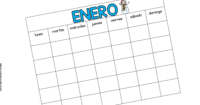These “C’s for the first days of school” are a group of consejitos that I consider important and also reflect on every year. Focusing on these C’s is important to me, as they represent essential aspects of establishing a positive classroom environment in the initial days, which will have a lasting effect throughout the rest of the school year.
Connections
Building relationships with your students, as well as among the students themselves, starts from day one! Engaging activities like identity maps, puzzles, and ‘All about me’ exercises can help foster a sense of belonging and establish meaningful connections within the class. Additionally, it’s important to allow your students to get to know you by sharing a bit about yourself. This can be achieved through a simple presentation where you discuss your interests, preferences, and share some pictures.
Classroom Agreements
Cooperatively establishing classroom norms and agreements is key to setting clear expectations and building a strong classroom community. Involving students in this process cultivates a sense of ownership, nurturing their commitment to maintaining a classroom environment defined by mutual respect. This can be achieved through the use of a shared language, which can then be reinforced with visuals in the target language. Some teachers opt to capture images of students exemplifying these agreements, accompanied by sentences in the target language, and display them in the classroom as visual aids.
Celebrate Names
Taking the time to learn and correctly pronounce each student’s name not only demonstrates respect but also creates a welcoming atmosphere. Celebrating diversity and various cultures fosters inclusivity. I invite you to explore my blog where I have shared a few name activities that you might find helpful!
Consistent Routines
Implementing clear and consistent daily routines not only improves classroom organization but also provides students with a sense of structure, empowering them to navigate their learning environment more effectively. These routines can encompass various elements, such as greeting your students at the door or the beginning of class, having them find a place to sit in the room, or starting the class by reading a message in the target language. Consistency is key in fostering students’ autonomy and a sense of security, particularly in the elementary classroom.
Comprehensible Input
Ensure that your students can comprehend the target language effectively. Enhance their understanding by incorporating gestures, visuals, and Total Physical Response (TPR). Pause and check their comprehension.Consider establishing a signal that allows your students to indicate whether they understand or not. Personally, I find it effective to pause and inquire, “Clase, ¿está claro? o ¿no está claro” while displaying a thumbs-up for clear understanding and a thumbs-down for lack of clarity. Some students might verbalize their response, while others might use their thumbs to signal.
Classroom Tour
Introducing students to the physical layout of the classroom and its resources can help them feel comfortable and confident in their new environment. Knowing where things are in the classroom and understanding their designated places after use will save you time in the future. If you move between different classrooms, consider taking a tour with your students so that you can also become familiar with the layout of the room you are teaching in. Additionally, don’t forget to label things in the room in the target language too!
Communicate With Families / Caregivers
Send a letter or email to your students’ families/caregivers either before or immediately after having your students in class on the first day. Inform them about yourself, your program, your professional experience, and the expectations for your class, as well as ways to get in touch with you! Families and caregivers also play a crucial role in the building of classroom communities!
Cultivate Self-Care
Include mindfulness pauses and brain breaks in your class routine. If you have a classroom, designate a space within it where students can go to manage their emotions and find calm during challenging moments. If you don’t have your own classroom, you might want to assign a space in the rooms where you teach. Additionally, as a teacher, find time for yourself to disconnect from your professional life and prioritize your well-being.
Lastly, don’t worry about a fully decorated classroom from day one. Starting with bare walls has proven effective for me for several reasons. Instead of focusing solely on decor, I prioritize essential materials and involve students in decorating. Our classroom is a shared space, not just mine. What other consejos would you add to this list? Have a wonderful school year!
Like it? Pin it!





